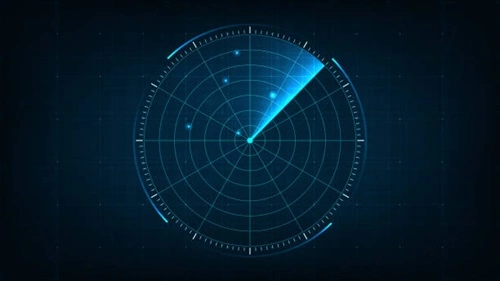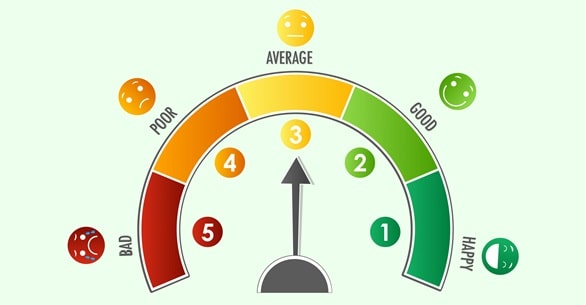Radar and sonar are two crucial technologies used for detecting and locating objects, but they operate on entirely different principles and are suited for distinct environments. While both are indispensable in their respective fields, understanding the difference between radar and sonar is essential for appreciating their applications, advantages, and limitations.
This article provides a comprehensive overview of radar and sonar, their principles, applications, and how they differ in various aspects.
What Is Radar?

Radar stands for Radio Detection and Ranging. It is a system that uses radio waves to detect, locate, and track objects. Radar systems emit electromagnetic waves, which travel through the air, strike an object, and return to the receiver as reflected signals. The time it takes for the signal to return helps calculate the distance of the object, while the direction of the wave indicates its position.
Key Features of Radar:
- Medium: Uses electromagnetic waves (radio waves).
- Environment: Operates efficiently in air and open spaces.
- Range: Can detect objects over long distances, often hundreds of miles.
- Speed: Measures the speed of objects using the Doppler effect.
Applications of Radar:
- Aviation: Air traffic control and weather monitoring.
- Military: Surveillance, missile guidance, and target tracking.
- Meteorology: Detecting and predicting weather patterns, including storms.
- Navigation: Collision avoidance in ships and aircraft.
- Space Exploration: Tracking satellites and spacecraft.
What Is Sonar?
Sonar stands for Sound Navigation and Ranging. It is a system that uses sound waves to detect and locate objects underwater. Sonar systems emit sound pulses, which travel through water, bounce off objects, and return as echoes. By measuring the time it takes for the echo to return, the distance to the object can be determined.
Key Features of Sonar:
- Medium: Uses sound waves.
- Environment: Operates efficiently underwater.
- Range: Effective for detecting objects within a few miles.
- Types: Active sonar (emits sound waves) and passive sonar (listens to sound waves).
Applications of Sonar:
- Marine Navigation: Assisting ships and submarines in underwater navigation.
- Fishing: Locating schools of fish.
- Military: Submarine detection and underwater surveillance.
- Oceanography: Mapping the seafloor and studying underwater features.
- Search and Rescue: Locating submerged objects, wreckage, or survivors.
Key Differences Between Radar and Sonar
| Aspect | Radar | Sonar |
|---|---|---|
| Full Form | Radio Detection and Ranging. | Sound Navigation and Ranging. |
| Medium | Uses electromagnetic waves (radio waves). | Uses sound waves. |
| Environment | Operates in air and space. | Operates underwater. |
| Range | Effective over long distances (up to hundreds of miles). | Limited to shorter ranges (a few miles). |
| Speed | Speed of radio waves (~300,000 km/s). | Speed of sound in water (~1,500 m/s). |
| Resolution | Higher resolution for detecting fine details. | Lower resolution due to sound wave dispersion. |
| Applications | Aviation, military, meteorology, navigation, and space exploration. | Marine navigation, fishing, oceanography, and military. |
| Efficiency in Medium | Works poorly in water. | Works poorly in air. |
| Interference | Affected by weather conditions and physical obstacles. | Affected by water temperature, salinity, and pressure. |
1. Principle of Operation
Radar
Radar works by transmitting radio waves, which travel through the air, strike an object, and bounce back to the radar receiver. The system calculates the distance and position based on the time taken for the waves to return.
Sonar
Sonar transmits sound waves, which travel through water, reflect off objects, and return to the sonar device. The time delay between transmission and reception determines the distance to the object.
2. Medium and Speed
- Radar: Uses electromagnetic waves that travel at the speed of light (~300,000 km/s). It is highly effective in air and space.
- Sonar: Uses sound waves, which travel at much slower speeds (~1,500 m/s in water). It is most effective in water, as sound waves propagate poorly in air.
3. Range and Resolution
- Radar: Has a much longer range, capable of detecting objects hundreds of miles away. It provides higher resolution and can distinguish fine details, making it ideal for precise tracking.
- Sonar: Has a shorter range, usually limited to a few miles underwater. Its resolution is lower due to the scattering and absorption of sound waves in water.
4. Applications
Radar Applications
- Aviation: Managing air traffic and monitoring weather conditions.
- Military: Detecting and tracking enemy aircraft, missiles, and ground vehicles.
- Navigation: Assisting in avoiding collisions and ensuring safe travel.
- Meteorology: Tracking storms and predicting weather events.
Sonar Applications
- Marine Navigation: Ensuring safe navigation for ships and submarines.
- Fishing: Identifying fish schools and underwater habitats.
- Military: Detecting submarines and underwater threats.
- Oceanography: Mapping the seafloor and studying marine ecosystems.
5. Interference and Limitations
- Radar: Performance can be affected by weather conditions, such as heavy rain or snow, which scatter radio waves. Physical obstacles like mountains or buildings can also block radar signals.
- Sonar: Sound waves in water are influenced by temperature, salinity, and pressure. These factors can distort the signal and reduce accuracy. Additionally, sonar waves can be absorbed or scattered by underwater objects.
6. Types of Radar and Sonar
Types of Radar
- Pulse Radar: Emits pulses of radio waves and measures the time taken for them to return.
- Continuous Wave Radar: Continuously emits waves to measure speed using the Doppler effect.
- Phased Array Radar: Uses multiple antennas to scan and track objects more precisely.
Types of Sonar
- Active Sonar: Emits sound waves and listens for echoes.
- Passive Sonar: Listens to sounds produced by other objects, such as submarines or marine life.
- Side-Scan Sonar: Used to create detailed images of the seafloor.
7. Efficiency in Different Environments
- Radar: Works best in air and open spaces. It is ineffective underwater because water absorbs electromagnetic waves.
- Sonar: Works best in water and is ineffective in air due to the slower propagation and dispersion of sound waves.
Choosing Between Radar and Sonar
The choice between radar and sonar depends on the specific application:
- Use radar for aerial, terrestrial, and space-based detection and tracking.
- Use sonar for underwater navigation, exploration, and surveillance.
Conclusion
While both radar and sonar are essential technologies for detecting and locating objects, their distinct principles, mediums, and applications make them suitable for different environments. Radar operates using electromagnetic waves, making it ideal for air and space, while sonar uses sound waves, making it indispensable underwater.
Understanding the difference between radar and sonar highlights their unique strengths and limitations, ensuring their effective use in various industries, from aviation and meteorology to marine navigation and military operations. Both technologies continue to evolve, pushing the boundaries of what is possible in their respective domains.



